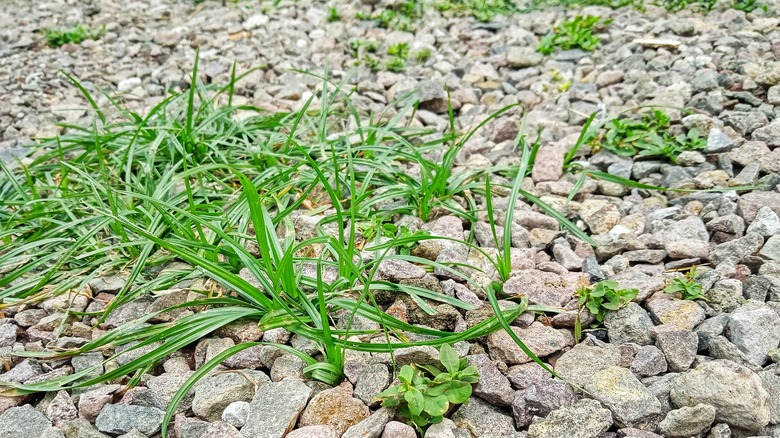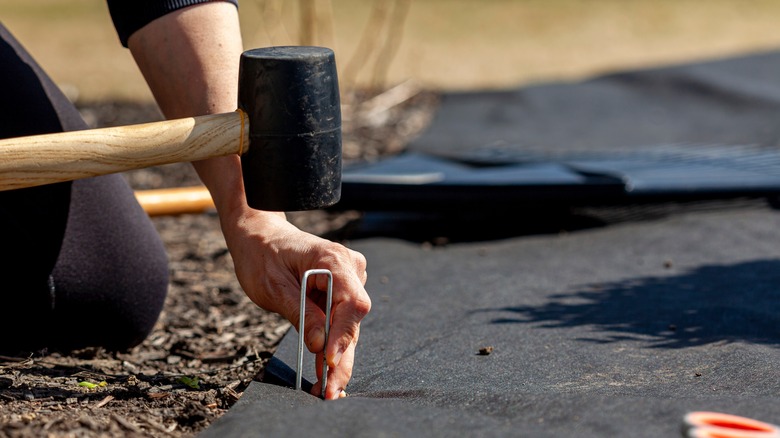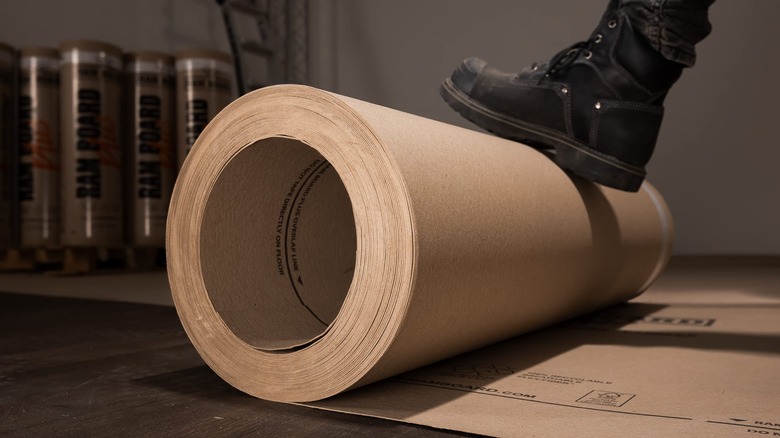Is A Common Flooring Product The Key To Stop Weeds Growing In Your Gravel?
We may receive a commission on purchases made from links.
Gravel is easy to use, affordable, intended to be low maintenance, and practically indestructible. There are several attractive types to choose from, which also makes it versatile. The only problem with using gravel is weed control. Apparently, finding it an ideal place to germinate, weeds seem to crop up overnight, ruining that clean, stylish look. Raking through the gravel will usually disturb weeds that have sprouted on the surface, but then they need to be picked up, or they will wither and die, leaving a mess that is equally unsightly. The more frustrating problem is those that have grown through the gravel layer from the dirt underneath.
Recently, a popular YouTube video has offered an alternative that uses a common flooring product, Ram Board, primarily designed to protect those surfaces from spilled paint or accidental damage. It might seem a little out of left field, but in principle, it provides a much greener solution. So the big question is, does it work? Well, it certainly can work, but you'll want to know more about the material's properties before you decide if it's the right product for your gravel areas.
A biodegradable alternative
Landscape fabric is popular as a weed barrier under gravel because it is relatively inexpensive and very effective. The challenge is that it's usually made of polypropylene, which is a type of plastic and, as such, a by-product of petrochemical production. It is not biodegradable and, therefore, not considered environmentally friendly. The alternative suggested by @Gardenary is a product called Ram Board, a temporary flooring used during painting or remodeling projects. It is widely available and comes on a roll that is easy to lay out and cut to size. The price is comparable with heavy-duty landscape fabric that usually laid under gravel. Ram Board is made of 100 percent recycled materials and is certified as a green product by the FSC (Forest Stewardship Council). So, just what the environmentally conscious gardener would be looking for.
Pay close attention when watching the video. At first, @Gardenary shows a very similar product called X-Board. This is also recycled and around half the price of Ram Board, but it is also only half the thickness. She then moves on to talk about Ram Board, which is the recommended choice.
The durability issue
The biggest issue with Ram Board could be durability. Although polypropylene landscape fabric will eventually break down, it lasts around a decade in the open air and possibly longer when hidden under gravel. Ram Board contains materials like old corrugated cardboard (OOC) and plywood fibers that will inevitably start to deteriorate when wet. In essence, it is tough, thick paper and was designed to be used indoors, not out.
Generally speaking, being biodegradable is a good thing. Eventually, Ram Board should become a harmless pulp that gets absorbed into the ground. The challenge is that nobody yet knows how long that will take because the idea of using it to control weeds in gravel is still relatively new. Ram Board's website highlights its properties as a potential weed barrier but focuses on areas where plants will be inserted, like borders or vegetable beds. So, the fact that it will eventually break down is not really a problem.
There are many natural ways to create weed barriers without using landscape fabric, but unfortunately, almost all of them rely on some type of mulch, so they don't work for gravel. Ram Board will do the job, but whether that's for a year, five years, or longer is the big unknown. Much will depend on your approach. If you're keen to garden as ecologically as possible, it could well be worth a try.


